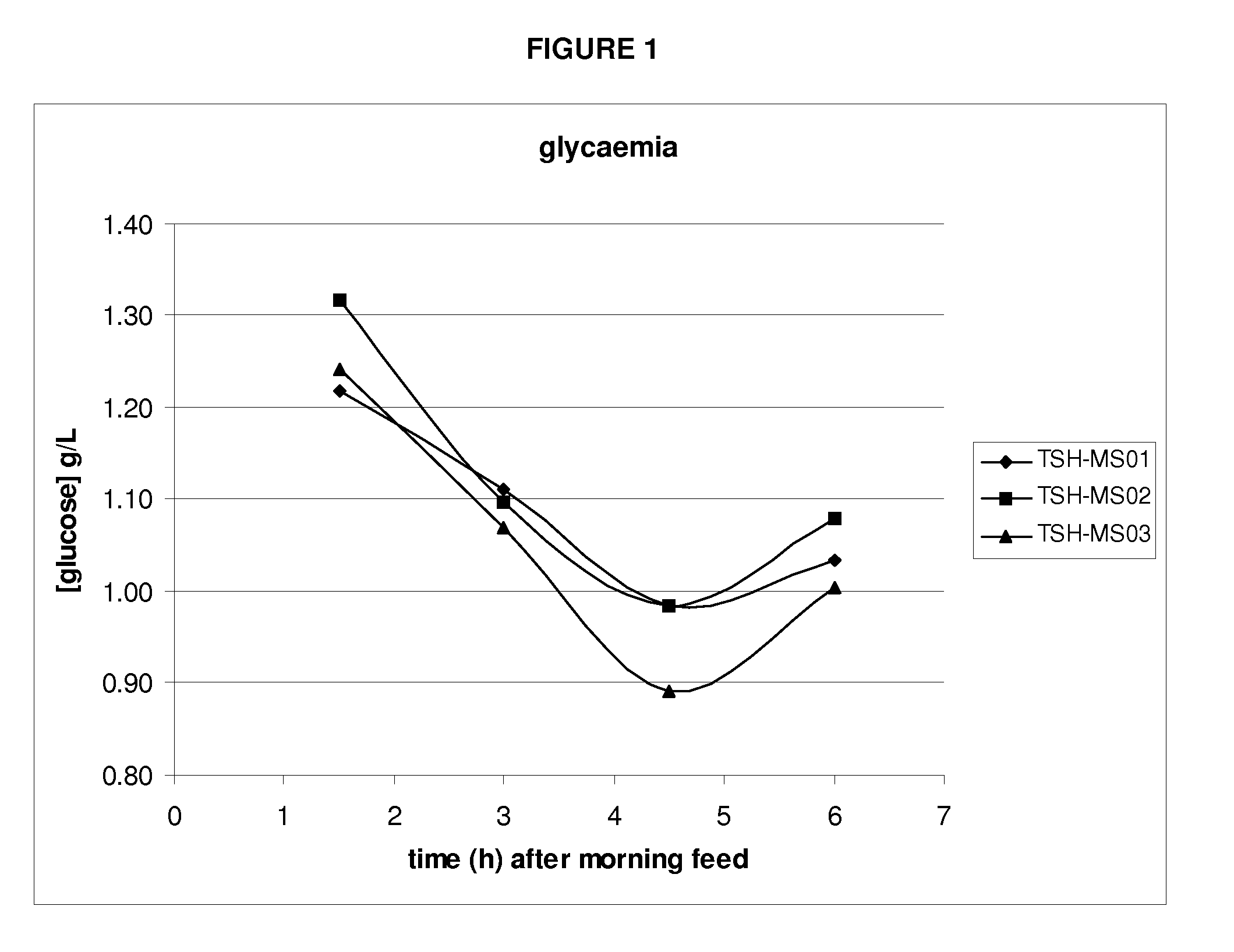Method for Improving the Digestibility and the Assimilability of Cereals and/or Fibres in a Monogastric Herbivorous Animal
digestibility technology, applied in the field of improving the digestibility and assimilability of cereals and/or fibres in a monogastric herbivorous animal, can solve the problems of not having the battery of enzymes sufficient to achieve complete and optimal digestion of fibres, not being able to influence the microbial population of the large intestine of monogastric, and not having the documents to disclose the administration of microorganisms capable of improving energy
- Summary
- Abstract
- Description
- Claims
- Application Information
AI Technical Summary
Problems solved by technology
Method used
Image
Examples
example 1
1. Material and Methods
[0096]The experiments described below were carried out on the experimental platform of AgroSup Dijon, France (previously ENESAD Dijon).
[0097]1.1. Management and Feeding of the Experimental Animals
[0098]1.1.1. Characteristics and Management of the Horses
[0099]Six French trotter geldings (age comprised between 3 and 9 years) of initial body weight comprised between 423 kg and 512 kg and initial body condition score comprised between 1 and 2 established according to the criteria of the national stud farms (Haras Nationaux), were used in this test. They were placed in individual boxes (12.5 m2), on a bedding of wood shavings (Tier Wohl®, Rettenmaier). This type of litter made it possible to avoid the uncontrolled ingestion of plant fibres. They had a block of mineral salts which they could access at will (Dolmin Salt, Lactona) and had free access to an automatic drinking trough.
[0100]The horses were up to date with their worming (Equimax, Virbac) and vaccination (...
example 2
[0186]In this example, the impact of supplementation with TSH-MS01 on the digestibility of the constituents of the ration before, during and after an endurance test was measured.
[0187]Reminder of the Protocol Implemented
[0188]Animals: Six purebred Arabian horses (two mares and four geldings) aged from 7 to 13 years, with an average weight and a body condition score (BCS) of 422.5 kg±20.7 and 3.2±0.2 respectively at the start of the experiment were used.
[0189]The animals were placed in individual boxes (13.3 m2), on artificial bedding (standard wood shavings, Tierwhol, Retteinmaier, France). The horses were put out in individual grass paddocks daily from 10:00 to 17:00. They had a block of mineral salts which they could access at will and had free access to an automatic drinking trough.
[0190]Training: The horses were trained in a similar manner. The training consisted of rides (2½ hours), out of doors over varied terrain, 3 to 4 times a week. The trainings were carried out at three g...
PUM
 Login to View More
Login to View More Abstract
Description
Claims
Application Information
 Login to View More
Login to View More - R&D
- Intellectual Property
- Life Sciences
- Materials
- Tech Scout
- Unparalleled Data Quality
- Higher Quality Content
- 60% Fewer Hallucinations
Browse by: Latest US Patents, China's latest patents, Technical Efficacy Thesaurus, Application Domain, Technology Topic, Popular Technical Reports.
© 2025 PatSnap. All rights reserved.Legal|Privacy policy|Modern Slavery Act Transparency Statement|Sitemap|About US| Contact US: help@patsnap.com


